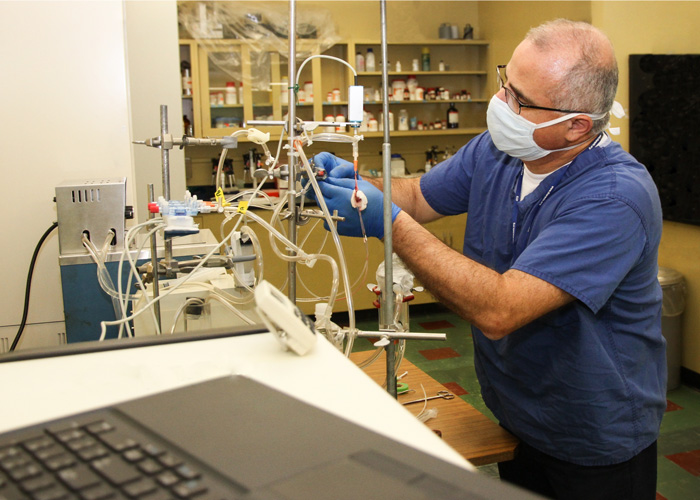Ghorbannia Dissertation Abstract
A Non-invasive Approach for Severity Assessment to Prevent Refractory Hypertension in Patients With Aortic Coarctation
Dissertation Date: July 25, 2022
Coarctation of the aorta (CoA) is a narrowing of the main artery delivering blood from the heart to the body and is one of the most common congenital cardiovascular defects. Guidelines for intervention include a transcatheter peak-to-peak pressure gradient across the coarctation of ≥20 mmHg. Unfortunately, hypertension remains common despite successful CoA surgery, and with prevalence increasing as a function of age at surgery. We hypothesize that adverse vascular remodeling persisting after CoA treatment is due to a deviation in local hemodynamics from the preferred homeostatic state thereby creating a positive feedback loop leading to refractory hypertension. Mechanistic investigation of this irreversible cycle of events is challenging among humans due to heterogeneity and a relatively small number of patients. In the current work a rabbit model was used with mechanically induced CoA to quantify precursors of hypertension including arterial thickening, stiffening, and vasoactive dysfunction. This allowed for investigation of new intervention thresholds and potential translational approaches under experimentally controlled conditions. In the current work we aim to 1) identify kinetics of the stress-mediated aortic response to coarctation-induced mechanical stimuli for physiological determination of thresholds that prevent precursors of hypertension post-treatment, 2) develop a Doppler-based severity assessment index suitable for the transfer of identified thresholds to human CoA, and 3) identify the effect of concomitant morphological anomalies often co-existing with CoA on the diagnostic accuracy of the newly-derived assessment index. Results from Aim 1 showed irreversible precursors of hypertension at peak-to-peak CoA gradients <20 mmHg with kinetics correlated to the severity and duration of CoA. Constitutive parameters identified for the growth and remodeling mathematical model served as predictors for accurate identification of these severity and duration thresholds. Results from Aim 2 showed that a newly derived non-invasive index using diastolic flow continuation and an associated pressure gradient, i.e., continuous flow pressure gradient (CFPG), serves as a strong predictor of invasive CoA gradient measurements. CFPG also yielded improved diagnostic performance relative to conventional Doppler-derived indices in groups of rabbits (n=34) and humans (n=25) with CoA. Aim 3 results showed that the proposed CFPG index is less sensitive to morphological anomalies often coexisting with CoA when compared to conventional Doppler-derived indices. Collectively, these results provide computational tools for the identification of revised thresholds for the severity and duration of CoA that may prevent hypertension after treatment, while also providing a patient-specific Doppler-based assessment approach for accurate transfer of these pre-clinical findings back to the clinic.
Return to Dissertation Schedule


